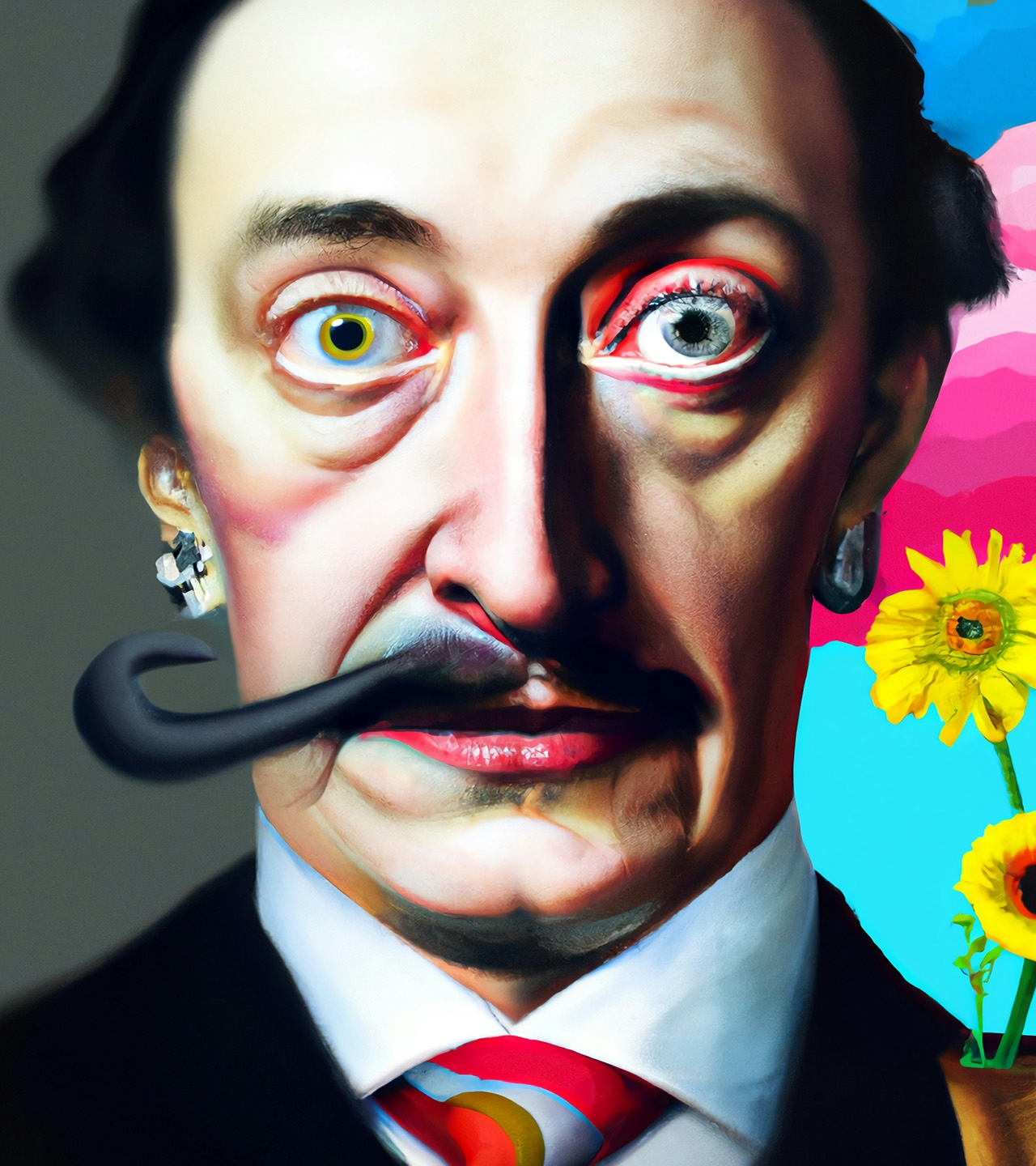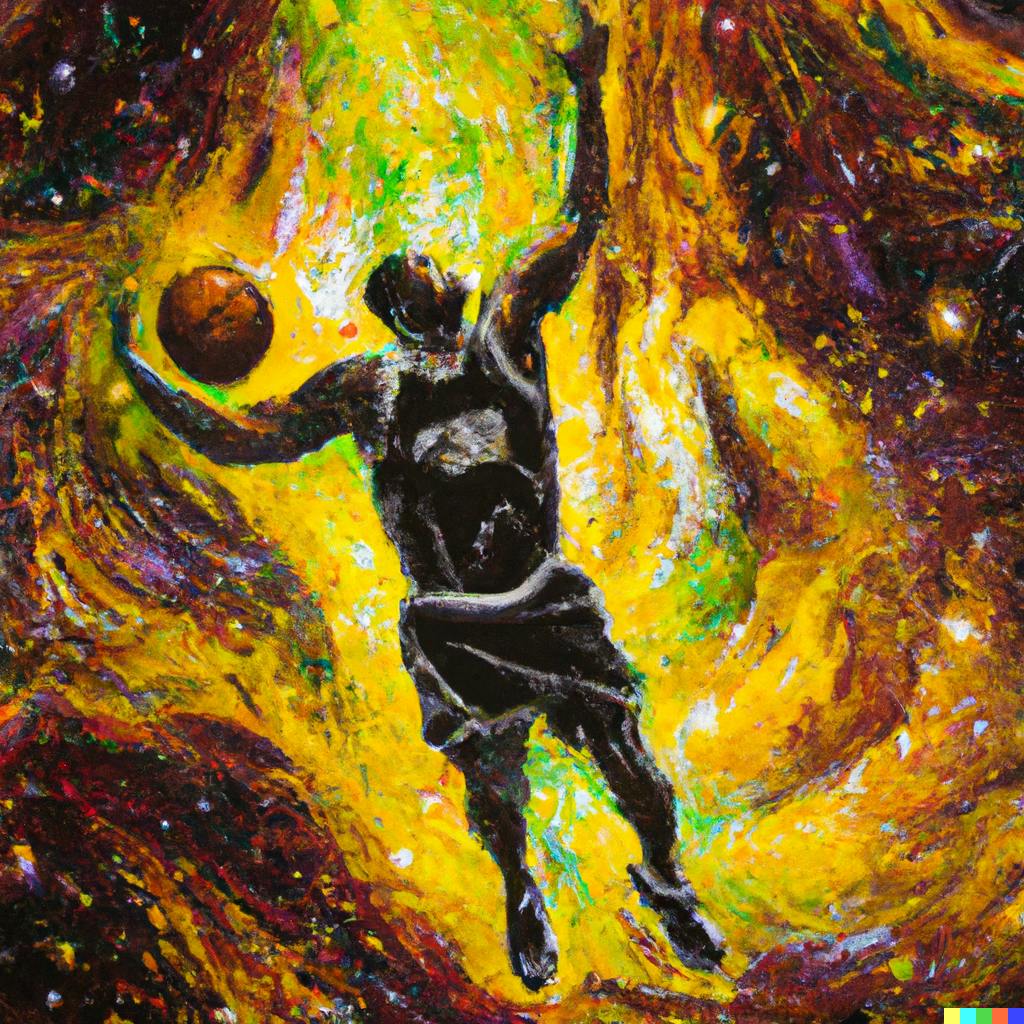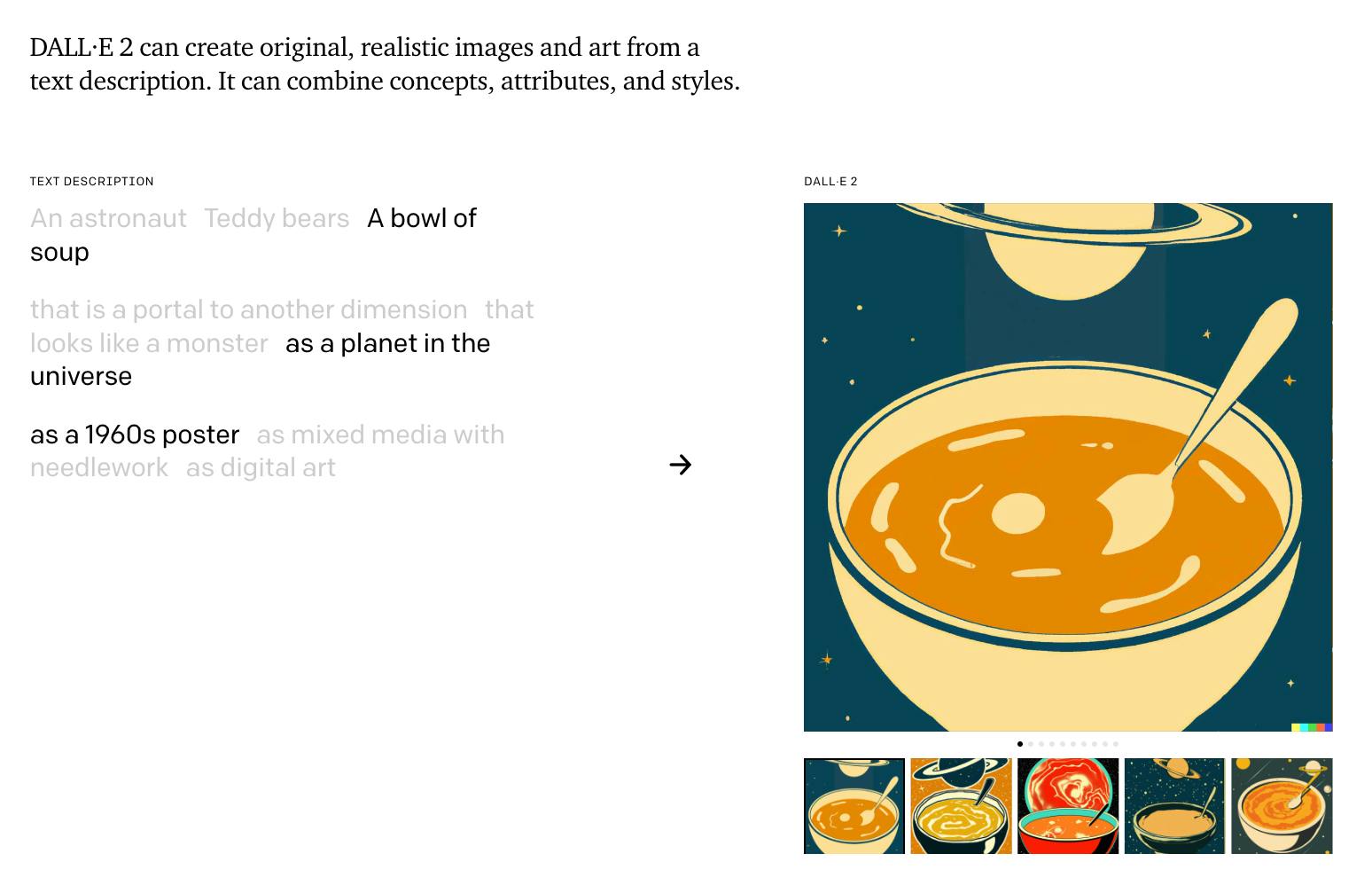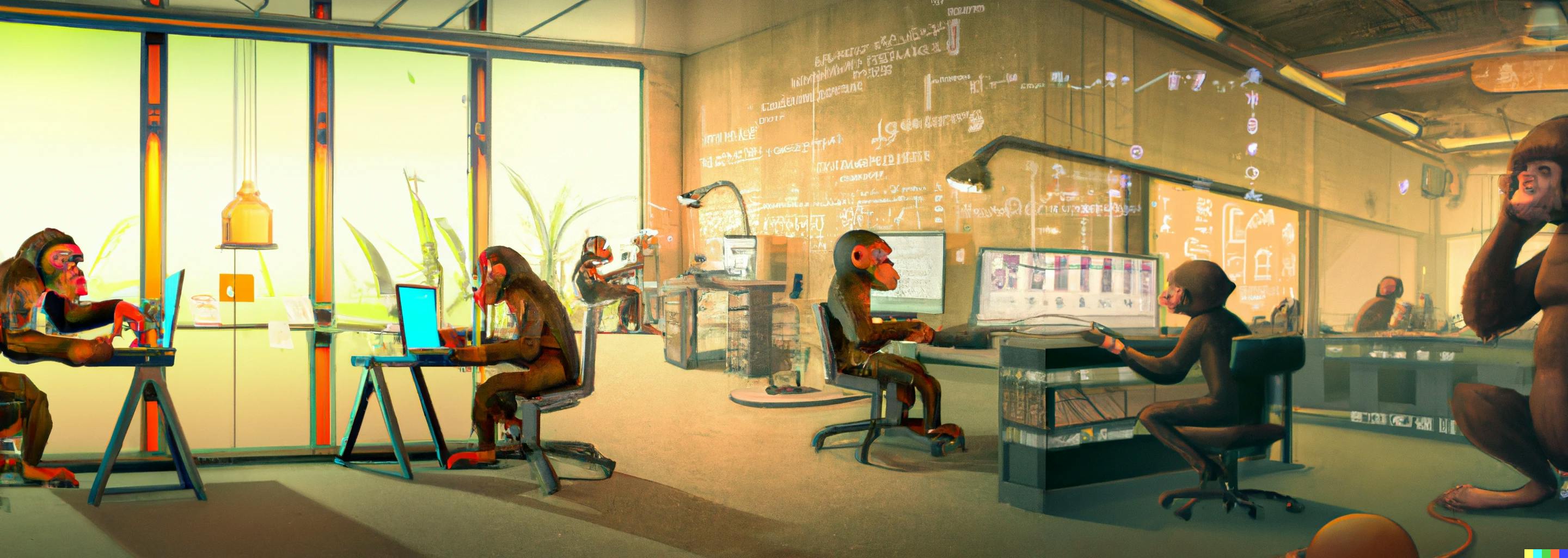
DALL-E 2 - AI Image generator that expands creative possibilities
You want art, but can’t call yourself an artist? What if there is a way for an app to create art on demand? Let us introduce you to DALL-E 2, AI tech beyond the imaginative.
DALL-E, an AI system from OpenAI that could produce realistic photos from the description of the scene or object was released at the beginning of 2021. The name of the generator was created by merging the names of a famous painter, Salvador Dali, and the robot WALL-E from the Pixar animated film. It quickly became a force to be reckoned with in the fields of computer vision and artificial intelligence. Using the CLIP (Contrastive Language-Image Pre-training) technique, it can create images that appear lifelike. With faster image production, lower latency, and greater quality, this surpasses the original DALL-E. A neural network (NN) called CLIP combines natural language processing and computer vision (NLP). This utilizes GPT-3's (a language model reproducing human-like text) "zero-shot" capability (Generative Pre-trained Transformer).
The most recent version is DALL-E 2, which debuted as DALL-E in January 2021. The software features have been enhanced (which is what users will be interested in). Based on GPT-3, DALL-E employs a neural network trained to identify images from their textual descriptions.
This method makes it simple for users to create images out of natural language. An image can be created by a user by merely saying or typing it, and the software will produce the image in real-time.
For illustration, you might say: “An expressive oil painting of a basketball player dunking, depicted as an explosion of a nebula”.

DALL-E 2 creating “An expressive oil painting of a basketball player dunking, depicted as an explosion of a nebula”.
DALL-E 2 can produce breathtaking, photorealistic graphics that resemble the realities of your dreams. The example of the latter is just one of many. DALL-E 2 will handle the rest if you simply tell it what you want it to produce.
With photo editing software, such as Photoshop, you may get comparable results, but doing so requires a talent that takes time to master. Without sufficient learning time, the average person cannot even utilize the software. DALL-E 2 does away with the need for this since its software can produce the image instantly. As in a regular human conversation, natural language must be used. This is the miracle of NLP and AI in action.
Investigating DALL-E 2
Visitors to the Open AI DALL-E 2 website can get further information on using DALL-E 2 (if you want a more technical and engineering explanation of how DALL-E 2 works, visit their blog). Users can understand the software's features better, which matters the most. There are demos of the full-featured program accessible right now (as of the writing of this article). Additionally, the resolution of the results (1024 × 1024) is constrained, and the quality is not always the best. For individuals who want to try upcoming versions, there is also a waitlist.
A demo of how DALL-E 2 can produce an image from a text description is available on their website. You can experiment with many options, but they are predetermined for this demo (non-user defined). Although you cannot enter your own text, you can choose the text blocks you want to use and create different combinations.

Text block demo with various combinations of how DALL-E 2 works.
DALL-E 2 uses a technique known as diffusion to combine connections and patterns from text or audio. Simply defined, it uses a sizable training set of data to synthesize the connection between words or speech vocabulary. By labeling photographs of vehicles that are a part of the training data set, the software, or its "memory," can be trained to learn what a "car" is, for instance. Additionally, it will understand descriptions based on color. DALL-E 2 will provide pixels of its rendering of a red car if you request a rendering of a "red car."
There are countless use cases
DALL-E 2 creates images from the input using computer processes known as algorithms and then outputs those images. It receives the user's description as input and then sends it to a backend system that has been trained on a set of millions of images in order to produce the desired output. There is a lot of data that the software can utilize to create any kind of image in its range of possibilities. The possibilities of what you can produce become limitless because the volume of data increase and will keep increasing over time.
At this time, DALL-E 2 is so proficient at what it does that it can act as a graphic designer or artist when it comes to producing art. DALL-E 2 can be commissioned by a producer to design a stunning album cover based on their vision. To promote their items, small business owners can create their own banners. Students can use this to add graphic components to their educational projects.
As a result of delegating this responsibility to an app, humans lose their ability to be innovative.
Does that apply? Keep reading if you want us to disclose these details to you.
Are artists getting outdated?
It begs the question.
Do AI programs that generate images in this way render creatives obsolete? Both outcomes are possible with this. The typical user who needs assistance with ideas can profit from the program. But this does not imply that artists will lose all relevance. Creatives could worry that a DALL-E 2 app will eventually take their place.
It may spread more widely with mobile apps and as a SaaS (Software-as-a-Service) option for businesses or people that require graphics and art content but lack in-house creative talent. To improve the material gained from the app, creatives like photographers, graphic designers, and artists will still be required; you cannot simply bark out orders to the app and get the perfect solution. Even if a business uses DALL-E 2, human input is still necessary for the creative process. A human will still be needed when the results are unclear because AI is not always accurate. Another possibility is that when DALL-E 2's popularity grows, there will be greater competition among marketable creatives. While some creatives may suffer due to this (especially those with less expertise), it may help more seasoned creatives come up with the best content ideas. By encouraging more originality, DALL-E 2 effectively tries to produce the most marketable material. In that situation, the less experienced creatives could devote time to training so they can learn how to use DALL-E 2 apps. As a new instrument to aid in the creation, DALL-E 2 can truly enhance the work of creatives. Even seasoned graphic designers occasionally hit a "creativity wall" or run out of original ideas. They can use renderings as inspiration to develop new content with the use of tools like DALL-E 2. AI tech needs not be perceived negatively; in this instance, it might be seen as a tool that helps creatives. This is comparable to how retouchers are assisted by Photoshop or Lightroom in their work.

Example prompt - “Monkeys working in an open space office, digital art.”
A threat to photographers and artists?
Professional artists are generally not going to feel very impressed by what DALL-E 2 can produce, despite the fact that the non-artistic person might feel. It's not only that it would endanger their livelihood, but let's be honest: apps don't invest the same amount of time and energy into making art as people do. Although it seems unjust, that is the case. In addition to the substance, art is valued for the time and labor that went into making it. Some people may view AI-generated works of art as having priceless worth because they view them as unique and irreplaceable.
Even the concept of generative art as a non-fungible token (NFT) that is confirmed on a blockchain database exists. Once there are enough of these DALL-E 2-generated works of art that have been confirmed to be NFTs, the market may become oversupplied and empty. Collectors still reward real art for its intrinsic value. They are viewed as more authentic because they were created by living, human artists. A DALL-E 2 app probably won't be able to replace what photographers desire to picture in the real world. While artificial intelligence (AI) can create the best digital art you can imagine, a snapshot is completely different. Photographers still prefer using their cameras to snap pictures for more authentic images.
AI makes it appear incredibly easy for a photographer to create a picture of a swimsuit model in the Bahamas. Everything about it is a lie, and many photographers would rather shoot on location with a model in the actual Bahamas than have a computer create a phony model in the digital Bahamas.
However, AI generative imaging can present a challenge to photographers, stock photography included. Some photographers' income is based on selling their images as stock images. Instead of using stock photo providers, users can purchase their images from DALL-E 2. DALL-E 2 images could be less expensive because they don't need to be licensed or have permission to be used because they depict the supposed-to-be-original representations from existing photographs. Even if that's the case, stock photography won't be fully replaced. While DALL-E 2 is in the experimenting phase, there are still more original, high-quality stock pictures available.

DALL-E 2’s image of the model in Bahamas.
Support, don’t displace
DALL-E 2 offers countless creative opportunities, yet it is not a perfect system. Even while the outcomes aren't always what one would hope for, they can still produce something valuable. The outcome frequently looks favorable but is occasionally covered with uncertainty. The level of detail and resolution will be taken into account. There is still an opportunity for improvement in DALL-E 2. It depends on the user whether or not they find it intriguing. DALL-E 2 may become a successful commercial product that offers more opportunities as more consumers find a use for it. The goal of technology like DALL-E 2 is not to take the place of artists but to be their auxiliary for creative inspiration. Instead, it will serve as a source of creativity and inspiration for everyone. Using DALL-E 2, artists can experiment with their concepts and produce even better art, if not even the best.
This is how artificial intelligence may support creativity rather than displace it.
The artwork created from DALL-E 2 may inspire fresh concepts. DALL-E 2 can give us an idea and provide us with a new concept, but from that step onwards, everything else lies in the artist’s own vision.
Hey, you! What do you think?
They say knowledge has power only if you pass it on - we hope our blog post gave you valuable insight.
If you want to share your opinion or learn more about artificial intelligence technology, feel free to contact us.
We'd love to hear what you have to say!